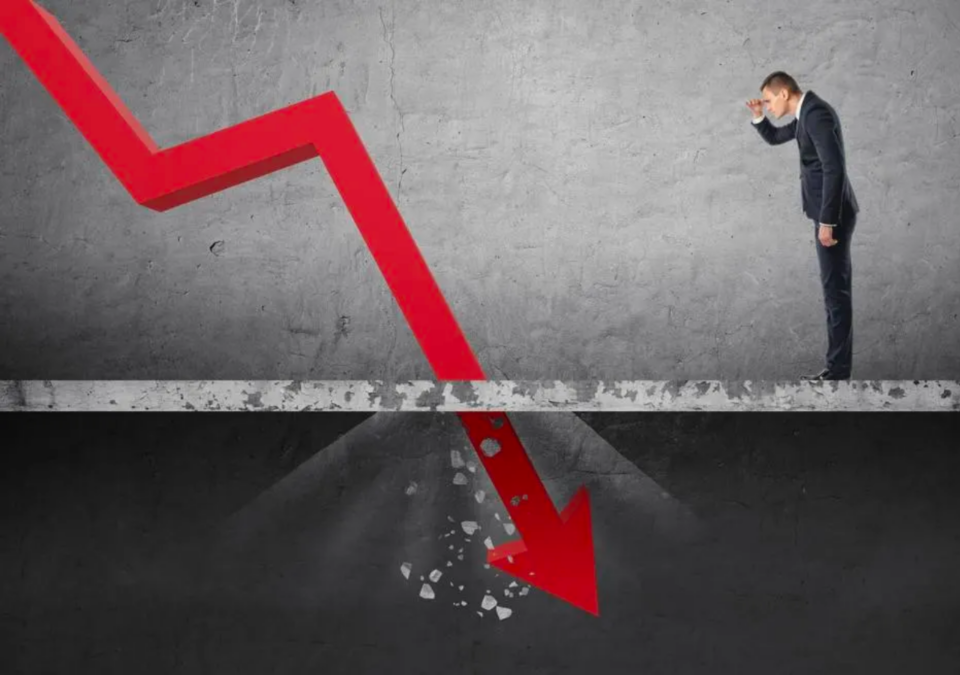The markets are having a tough week.
In response to President Trump’s sweeping new tariffs announced on Liberation Day, the S&P 500 has dropped over 8% and the NASDAQ over 9% and volatility is surging. Understandably, days like this can be unnerving.
Much of the market’s reaction stems from fears that these new tariffs will be a drag on the U.S. economy—raising costs for consumers, disrupting supply chains, and dampening growth. Some investors are even pricing in the possibility of a recession. These concerns are valid, and they’re driving today’s headlines and volatility.
So, let’s take a step back and focus on something crucial:
The stock market is not the economy.
Even if we know the economy is heading into rough waters—even if a recession is coming—that alone doesn’t tell us what the stock market will do. The relationship doesn’t work that way. In fact, it usually works in the opposite direction.
Instead, the stock market doesn’t reflect the present—it tries (imperfectly) to anticipate an uncertain future. If there’s a connection between the two, it’s that the stock market predicts the economy—ish. And when the market falls, it often begins to recover well before the economy shows signs of improvement.
Let’s look at two clear examples:
- During the 2008 Financial Crisis, the stock market bottomed on March 9, 2009—but economic headlines continued to worsen. Unemployment kept rising. Banks were still failing. The sovereign debt crisis was ramping up. Many believed the climb from the March 9th lows was just a “dead cat bounce.” Yet that was the start of an eleven-year bull market.
- In March 2020, during the early days of the COVID-19 pandemic, the market fell over 30% in just 22 days. The world was shutting down. Case counts and deaths were soaring. The economy was contracting faster than it had since the Great Depression. And yet, the market bottomed and rebounded—gaining 45% in just three months—even as the public health and economic crises continued.
This is why we don’t try to time the market or react to headlines. Even if you manage to get out at the right time, you still need to get back in at the right time—and that’s incredibly difficult to do.
A 2012 J.P. Morgan study tested a “wait until the coast is clear” strategy—only investing when valuations were reasonable, unemployment was low or falling, the economy was expanding, and inflation was mild. The result? That strategy severely underperformed a simple stay-invested approach. From 1948 to 2011, the always-invested portfolio delivered nearly three times the return. From 1980 to 2011, it delivered more than double.
In our recent article, Don’t Be Afraid of the Market, we emphasized that sharp market drops—though painful—are part of the investing journey. We noted that “Having some of the worst investment luck imaginable [by investing right before a bear market] undoubtedly mattered, but not to the extent that it would have been detrimental to sensible investment goals.” Every instance of misfortunate timing eventually resulted in meaningfully positive real returns. Selling during moments like this often means turning a temporary paper loss into a permanent one.
Yes, this week’s drop—on top of the recent weeks’ declines—is unsettling. But, if you’ve taken our advice to ensure your portfolio has ample liquidity through cash reserves and bonds (which are up year-to-date), you shouldn’t be forced to sell into this volatility. And after a strong run in equities over the past few years, selling now could also generate significant taxes—another cost of trying to outguess the future.
So here’s our best advice: Don’t panic. Stay the course. Don’t look at your portfolio—because that will just make things harder.
If you’re a long-term investor with a thoughtfully constructed portfolio, market volatility is uncomfortable, but it’s not unexpected. And trying to sidestep it by waiting for things to “feel better” often means missing the recovery.
As always, if you are one of our clients, we’re here if you’d like to talk about what’s happening or revisit your plan. But unless something in your life has changed, the best move today is likely no move at all.



